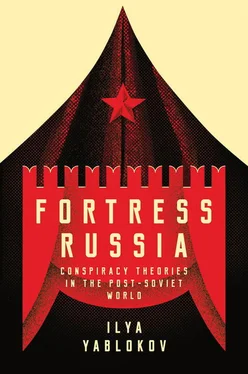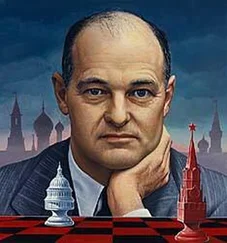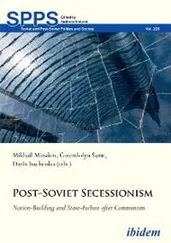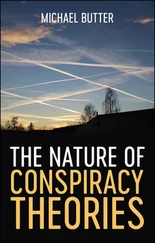On 21 February 2012, six women from the all-female band Pussy Riot performed a so-called ‘punk-prayer’ at the Cathedral of Christ the Saviour in Moscow, in which they called on the Mother of God to drive Putin away. Almost two weeks later three members of the band were arrested. This incident garnered more publicity than all of the scandals which had emerged in the spring of 2012 in relation to the head of the Russian Orthodox Church. One of these concerned a lawsuit which revealed that Kirill owned an expensive flat in the centre of Moscow; Kirill wanted his neighbour, Iurii Shevchenko, to pay compensation of approximately £400,000 because of dust which had entered his apartment during the renovation of Shevchenko’s apartment. Later, it was revealed by bloggers that Kirill owned an extremely expensive watch – a gold Breguet, worth around £19,000.00 – when an attempt to airbrush it from his photo on the official Church website failed because its reflection could be seen in the polished table he was sitting at (Weaver, 2012). The authorities initially treated the Pussy Riot performance as ‘hooliganism’; however, soon the case against them escalated into something much more significant. According to the state-aligned media, their critique of the Church posed a major threat to Russian statehood.
Numerous television programmes, as well as interviews given by politicians and pro-Kremlin intellectuals, had begun to depict Orthodoxy as the key element in both Russian identity and the Russian state, and the foundation of Russian greatness ( V Kontekste: Chto stoit za aktsiei ‘Pussy Riot’ v Khrame Khrista Spasitelia , 2012; Gavrov, 2012). Accordingly, by April 2012, the Pussy Riot incident, and, in particular, their attack on the Church, had acquired a distinctive conspiratorial character. This approach was actively disseminated in the media. On 3 April, Kirill stated that the Russian Orthodox Church had become the victim of an ‘information war’ ( informatsionnaia voina ) (Sopova, 2012). This date was the turning point in a media campaign against Pussy Riot.
From April 2012, the notion of a war against the Orthodox Church dominated the speeches of pro-Kremlin intellectuals and Church representatives, who interpreted public criticism of the Church as part of the West’s conspiracy against the Russian nation. The Patriarch himself insisted that the Church was the essential element of national identity and for that reason had always been the first target of Russia’s enemies and invaders (Rossiia-1, 2012). Commenting on the Pussy Riot affair, Sergei Markov, a prominent pro-Kremlin spin doctor, stated that there were powerful forces at work both inside and outside the country which wished to deprive the Russian people of their mission in global history and which sought to destroy the Church as ‘a depository of Russian national identity’ (Nadezhdina, 2012).
In the state-aligned media the Pussy Riot incident was framed as a latter-day version of the anti-religious campaigns of the Bolsheviks, in which many priests were persecuted and churches were closed. Arkadii Mamontov, a high-profile journalist with the Rossiia television channel and an active defender of the Church in the Pussy Riot scandal, called their actions a ‘relapse into neo-Bolshevism’, implicitly raising the possibility of new anti-Church pogroms (Kashin, 2012b).
These allusions surfaced repeatedly in television programmes and news reports on the state-aligned channels throughout the period of the trial, which ran from April to October 2013. To encourage widespread support for the Church, the Moscow Patriarchate decreed that prayer services be held in defence of ‘desecrated relics’ in the Cathedral of Christ the Saviour; some 30 icons, according to the clerics, had been recently attacked by vandals (Rozhkov, 2012). On 22 April these services were held in all major Russian cities, and served to demonstrate that the great majority of Russian people stood behind the Church in the face of a hostile minority who aimed to destroy the unity of the nation. In his address before the start of the Moscow service, the Patriarch evoked the unique multi-cultural spirit of Russia, and claimed that the attack on the Orthodox Church threatened the unity of the entire nation (Patriarkh Kirill, 2012a).
These prayers, widely covered by the major television channels, were portrayed by the state-aligned media as an embodiment of ‘the people’, who shared the Orthodox faith and supported the Patriarch as well as the federal authorities. Supporters of the Church were described as pious, loyal to the government, and not involved in recent political activities. The Russians in television coverage of the Pussy Riot case were generally depicted as a homogenous, Orthodox community, and any opinions which differed from the norm were downplayed (Hutchings and Tolz, 2015, pp. 194–221). However, Russian television’s approach was very far from reality (Kashin, 2012a).
The major television channels offered a common conspiratorial interpretation of the Pussy Riot event, portraying them as puppets of the West who were striving to split the nation apart (Baranov, 2012). Journalists and public intellectuals used a variety of names to stress the otherness of the members of the band: they were described as witches, blasphemers and provocateurs. Their supporters, who shared their liberal values, were said to be alien to the Russian nation (Pust’ govoriat: Besy, 2012; Poedinok s Vladimirom Solov’evym’, 2012). On 6 April, in the introduction to the documentary Hystera Ænigma, broadcast by the major television channel NTV, the commentator posed the question: ‘Why are gays demanding that the Cathedral of Christ the Saviour be demolished?’ A representative of Moscow’s gay community, Nikolai Alekseev, supposedly responded with ‘Yes, that is true’. However, Alekseev’s words had been subject to a massive editorial cut, in order to give the impression that the LGBT community was in cahoots with Pussy Riot and that they did indeed want the cathedral to be destroyed. The rest of the documentary continued in this same conspiratorial vein and portrayed the members of the band as immoral sexual perverts who wanted to trigger a revolution in Russia (CHP. Rassledovanie: Hystera Ænigma, 2012a).
The distinction between the ‘Orthodox majority’ ( pravoslavnoe bol’shinstvo ) of ‘the people’, and the ‘minority of perverts and liberals’ who were, again, depicted as ‘the Other’, played an important role in developing the notion of Russian identity by means of conspiratorial discourse. In an aggressive media campaign, spokespersons of the Church, pro-Kremlin intellectuals and journalists sought to into establish the notion of a threat to the nation through internal subversion by a conspiring ‘fifth column’, supposedly with the West’s support of the West. A trilogy of talk-shows Provocateurs ( Provokatory ) was introduced by Arkadii Mamontov, a prominent television presenter known for his coverage of the war conflicts and conservative, statist views. This series of highly opinionated documentaries provided the case with a conspiratorial narrative.
On 29 April, the state television channel Rossiia-1 broadcast the first episode of the weekly talk-show Spetsial’nyi korrespondent (Special correspondent) , which articulated the subject: the battle being waged for Orthodoxy and the nation in the face of opposition from the ‘blasphemers’ ( koshchunitsy ), supported by the ‘West’. The documentary opened with scenes from the 22 April collective prayer service and later referred to the supposed conspiratorial origins of the Pussy Riot performance. Mamontov posed the question ‘What shall we do, people?’ ( Chto delat’ budem, liudi? ) to the viewers and the studio audience, hence separating them from the ‘Other’ represented by Pussy Riot. (Spetsial’nyi korrespondent: Provokatory, 2012) ‘The people’ he appealed to were represented in the studio by an Orthodox nun; by Vladimir Legoida, press-secretary of the Moscow Patriarchy; and by several actors, journalists, and academics who pledged their allegiance to Orthodox Christianity.
Читать дальше
Конец ознакомительного отрывка
Купить книгу












